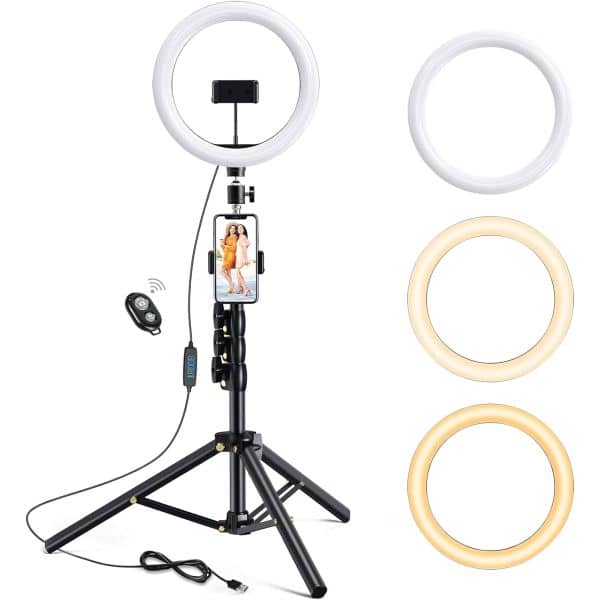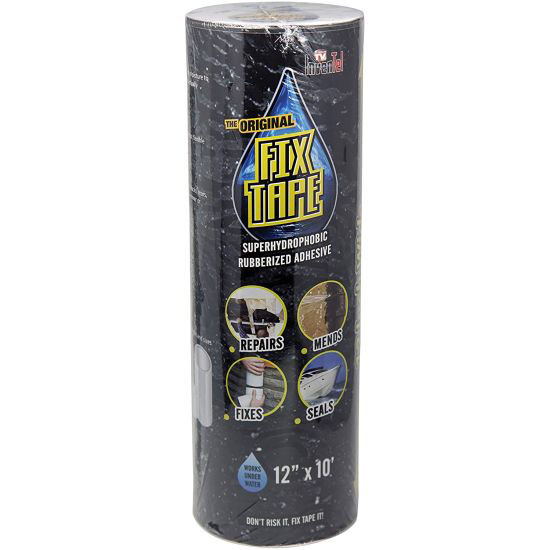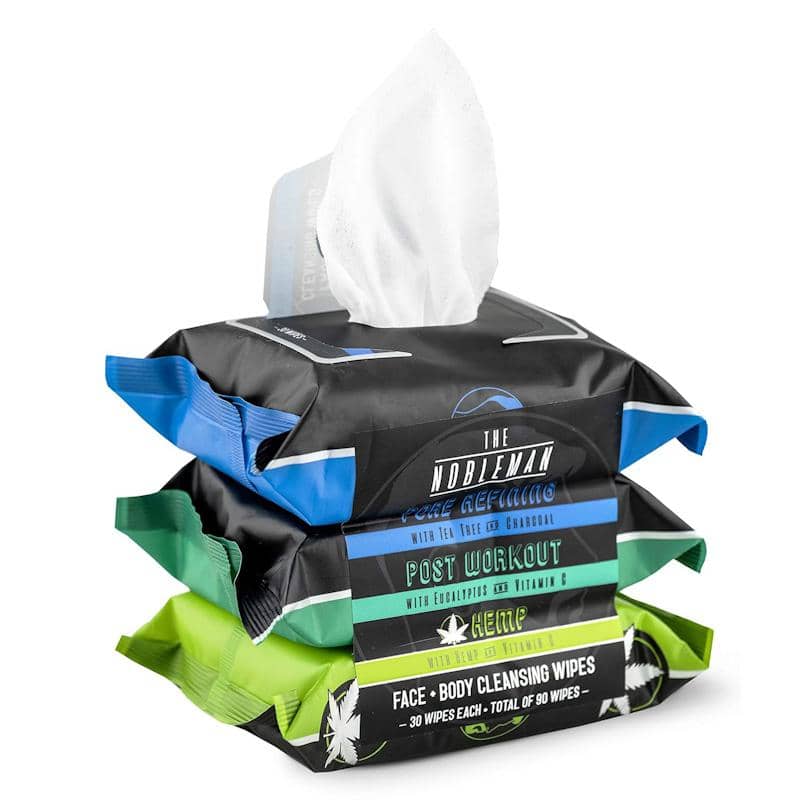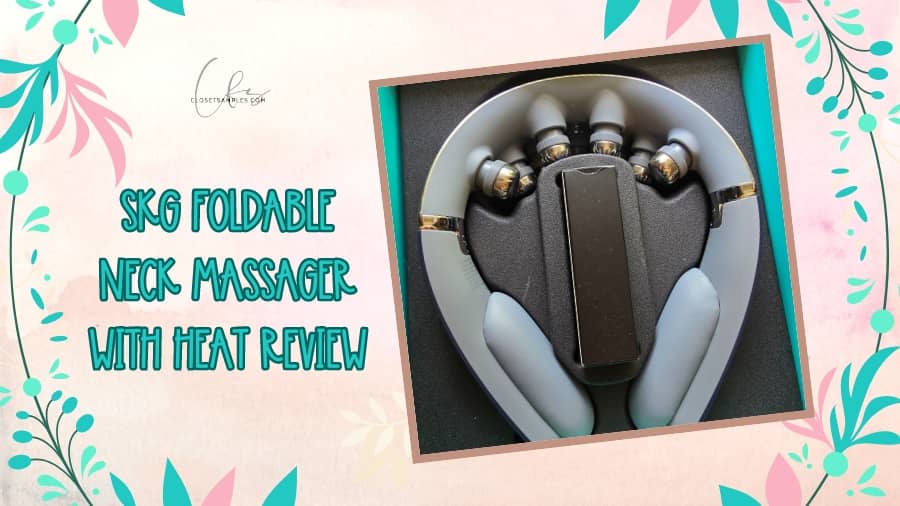Alright folks, winter's back, and you know what that means? Snow angels, cocoa by the fire, and... the ever-present threat of a power outage that chills your bones faster than a rogue snowball down your shirt. But fear not, fellow humans, for I'm here to arm you with the knowledge and sass to conquer even the darkest, iciest blackout like a total pro.
So, the lights flicker and die. The fridge whimpers its last pathetic hum. Don't let that send you spiraling into a frozen pizza-fueled meltdown. Instead, channel your inner MacGyver and embrace the cozy chaos!
Surviving a power outage in severe winter weather requires careful planning and preparation. As temperatures plummet, the challenges of staying warm and safe become more pronounced. In this article, we'll explore essential tips and tricks to navigate the complexities of a winter power outage and emerge unscathed.
Jump Ahead:
Image credit: Freepik
Understanding Winter Power Outages
Winter power outages can be caused by various factors such as heavy snowfall, ice storms, or equipment failure due to extreme cold. The implications extend beyond inconvenience, posing risks to health and safety. Understanding the reasons behind these outages is the first step towards effective preparation.
The Culprits Behind the Blackout:
Extreme Cold: Winter's icy fingers can stiffen power lines, making them more susceptible to snapping under heavy loads or strong winds. Additionally, the increased demand for electricity during cold weather can overload the grid, triggering shutdowns.
Winter Weather Warriors: Blizzards, snowstorms, and heavy ice accumulation are potent foes. High winds can topple trees and power lines, while thick snow and ice can weigh down lines and damage infrastructure.
Aging Infrastructure: Older power grids, weakened by time and wear, are more vulnerable to winter's wrath. Equipment failures and overloaded circuits can be more frequent, leading to outages.
Remember: Winter power outages are temporary inconveniences, not permanent disasters. With knowledge, preparation, and a dose of positive attitude, you can weather the storm and emerge with a sense of accomplishment and appreciation for the cozy comfort that awaits when the lights flicker back on.
Image credit: Freepik
Key Preparations for Winter Power Outages
Create an Emergency Kit Checklist
Assemble a comprehensive emergency kit containing essentials like flashlights, batteries, non-perishable food, and first aid supplies. Don't let a sudden blackout turn your peaceful winter wonderland into a shivering nightmare! Be prepared with a well-stocked emergency kit and face the darkness with confidence and comfort. Here's your handy checklist to get started:
Essentials for Staying Warm:
Keeping the Light and Communication Going:
Fueling Your Inner Fire:
Keeping Safe and Healthy:
Bonus Comfort Items:
Remember:
- Customize your kit: Adapt this checklist to your specific needs and household size.
- Keep it accessible: Store your kit in a central location, easy to grab in case of a sudden outage.
- Update regularly: Check and replenish your kit periodically to ensure everything is in good condition.
With this checklist in hand, you can face winter power outages with confidence and comfort. So, gather your supplies, snuggle up with a blanket, and enjoy the wintery magic, even when the lights go out!
Bonus Tip: Download emergency management apps for your area for real-time updates and resources during outages. Some examples to look into are:
- FEMA App
- Red Cross Emergency App
- NOAA Weather Radar & Alerts
- First Aid - American Red Cross
- Emergency: Alerts & Notifications
- Disaster Alert (PDC)
- Emergency Radio (Police Scanner)
- ICE Medical Standard
- MyShake - Earthquake Early Warning
- Zello PTT Walkie Talkie
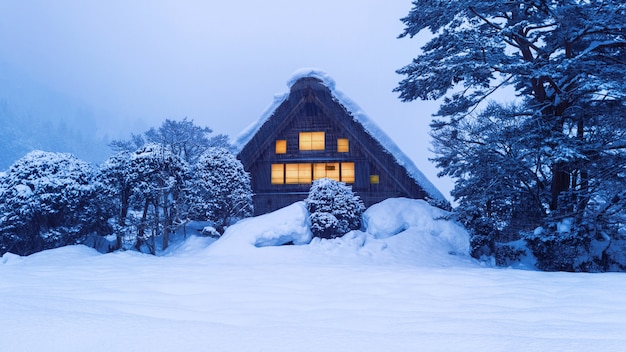 Image credit: Freepik
Image credit: Freepik
Insulating Your Home
Imagine your home as a cozy mitten in the icy grip of winter. Proper insulation is the snug lining that traps precious warmth inside, keeping you comfortable and your wallet happy. But why is it so crucial, and how can you ensure your home is truly sealed against the cold?
The Science of Staying Warm: Heat transfer happens in three ways: conduction, convection, and radiation. Conduction is like touching a hot stove - heat flows directly between objects in contact. Convection involves air movement, with warm air rising and carrying heat away. Radiation is like sunbathing - heat travels in waves, warming anything it touches.
Insulation's Superpower: Properly installed insulation acts like a thermal barrier, slowing down all three heat transfer methods. It's like adding tiny air pockets to your walls, ceilings, and floors, creating a resistance to heat flow. This means less heat escapes your home, keeping you toasty and reducing the workload on your heating system.
Benefits Beyond Comfort: The advantages of proper insulation go far beyond a warm and cozy winter. You'll also experience:
- Lower energy bills: A well-insulated home requires less energy to heat, translating to significant cost savings.
- Improved air quality: Insulation can help reduce drafts and air leaks, minimizing the infiltration of dust, pollen, and other allergens.
- Enhanced soundproofing: Insulation can act as a barrier to unwanted noise, creating a more peaceful living environment.
- Increased home value: A well-insulated home is generally more attractive to potential buyers, boosting its resale value.
Types of Insulation and Where to Use Them: Different types of insulation are best suited for different areas of your home:
- Fiberglass: A popular and cost-effective choice for attics, walls, and floors.
- Rockwool: Similar to fiberglass but fire-resistant, making it ideal for areas around fireplaces and chimneys.
- Spray foam: Provides excellent air sealing and insulation but requires professional installation.
- Blown-in insulation: Perfect for filling hard-to-reach areas like attics and crawl spaces.
Investing in Your Comfort and Savings: Properly insulating your home is an investment that pays off in the long run. By sealing the heat in and the cold out, you'll create a more comfortable, energy-efficient, and valuable living space. So, don't let the winter wind steal your warmth or your wallet - wrap your home in the snug embrace of proper insulation!
Additional Tips:
- Seal air leaks: Use caulk and weatherstripping around windows, doors, and other openings to prevent drafts.
- Upgrade your windows: Consider replacing old, drafty windows with energy-efficient models.
- Maintain your HVAC system: Regular maintenance ensures your heating system operates efficiently and maximizes the benefits of insulation.
Remember, a well-insulated home is a happy home, so don't delay - start sealing the deal on your comfort and savings today!
Image credit: Freepik
Alternative Heating Sources
When a winter storm plunges your world into darkness and the temperature plummets, staying warm becomes priority number one. But without the trusty backup of your electrical heater, what options do you have? Fear not, fellow cold warriors! Here's a rundown of alternative heating sources to keep you cozy during a power outage:
Combustion Power:
- Fireplace: A classic for a reason, wood-burning fireplaces provide warmth and ambiance. Ensure your chimney is clean and have a good supply of dry firewood on hand. Remember, never leave a burning fireplace unattended.
- Wood Stove: Similar to a fireplace, wood stoves offer efficient heat and can even cook food! Choose a stove certified for indoor use and properly vented.
- Propane Heater: Portable and powerful, propane heaters offer immediate warmth without requiring electricity. Use them outdoors or in well-ventilated spaces with caution, as they produce carbon monoxide.
Fuel-Free Options:
- Emergency Candles: They don't provide a ton of heat, but candles can create a warm glow and take the edge off the chill. Use tealights or pillar candles in heat-resistant holders and never leave them unattended.
- Chemical Hand Warmers: These pocket-sized heat packs offer instant warmth for your hands and can be reused. Perfect for keeping fingers toasty while bundled up or reading a book.
- Hot Water Bottles: Fill with hot water from your stove or thermos and snuggle up for a personalized dose of warmth. Cozy and comforting, especially for sore muscles.
Bonus Tips:
- Close the Curtains: Block drafts and retain heat by closing curtains and blinds on all windows and doors.
- Build a Blanket Fort: Embrace your inner child and create a cozy haven with blankets, pillows, and sleeping bags. It's not just fun, it also traps heat effectively.
- Gather Around: Huddle together with family and pets to share body heat and keep each other warm. Bonus points for singing carols or telling stories!
Remember, safety is paramount when using alternative heating sources. Always follow manufacturer instructions and prioritize proper ventilation, especially with combustion-based methods. With a little preparation and these handy tips, you can transform a winter power outage into a cozy adventure full of warmth, family, and maybe even a bit of marshmallow roasting by candlelight. So stay warm, stay safe, and enjoy the magic of winter, even when the lights are out!
Image credit: Freepik
Food and Water Management
Safe Food Storage
Winter power outages can be the bane of our frosty existence, but knowing how to safely store food during these icy blasts can save you from tummy troubles and wasted groceries. Here's how to be a food storage superhero during a blackout:
Keeping the Chill:
- Embrace the Fridge: It's your cold fortress! Food will stay safe for up to 4 hours with the door closed. Resist the urge to peek; each opening releases precious cold air.
- Freezer Fortress: A fully stocked freezer holds its temperature for 48 hours, a half-full one for 24 hours. Prioritize frozen meats, poultry, and fish during this time.
- Ice Pack Power: Freeze water bottles beforehand! They act as reinforcements for both your fridge and cooler, extending the cold's reign.
- Cooler Kingdom: If the outage lingers, invest in a good cooler with ice or frozen gel packs. Group food together for better insulation and prioritize perishables like dairy and cooked meals.
Beyond the Frozen Domain:
- Pantry Powerhouse: Non-perishables like canned goods, pasta, and nuts are your allies. Stock up and create delicious meals without a single flicker of electricity.
- Fruit Basket Brigade: Apples, oranges, and pears are happy campers at room temperature. Keep them away from heat sources and enjoy their vitamin boost.
- Bread Brigade: Store bread in its original bag or a breadbox to keep it fresh. Resist the urge to slice unless you're ready to devour it all (because nobody likes stale bread!).
Safety First:
- When in Doubt, Throw it Out: Food safety is paramount. If you're unsure about a food's temperature or appearance, err on the side of caution and toss it.
- Thaw Wisely: Never thaw food at room temperature. Use cold running water, the refrigerator, or the microwave (immediately followed by cooking).
- Cook it Thoroughly: When in doubt, cook food to an internal temperature that kills harmful bacteria. Use a food thermometer for accuracy.
Bonus Tips:
- Invest in a battery-powered cooler: A lifesaver for longer outages, especially for perishable items.
- Know your emergency plan: Determine which foods to consume first and keep a basic cooking kit with a manual can opener on hand.
- Stay informed: Listen to local updates for estimated restoration times and adjust your food storage accordingly.
Remember, with a little forethought and these handy tips, you can conquer even the coldest power outage without sacrificing your health or your delicious meals. So, stay calm, store smart, and savor the wintery adventure, even when the lights are out!
Image credit: Freepik
Access to Clean Water
Even though winter's icy landscapes are undeniably beautiful, power outages can quickly turn them into a chilling reality. One crucial concern during these frosty blackouts is ensuring access to clean, safe water. Here are some key steps to keep your family hydrated and healthy:
Prepare Before the Blizzard Hits:
- Fill 'er Up: Stock up on bottled water! Aim for one gallon per person per day as a minimum. Store bottles in a cool, dark place to prevent taste alteration.
- Container Crusade: Gather clean, food-grade containers with tight-fitting lids to store additional water. Sanitize them thoroughly before use with a solution of one teaspoon of unscented bleach per gallon of water.
- Maintain the Pipes: Insulate exposed pipes to prevent freezing, especially near exterior walls and crawl spaces. Wrap them with foam pipe sleeves or heat tape, following manufacturer instructions.
- Know Your Shutoff Valve: Locate and learn how to operate your main water shutoff valve. This will be crucial if pipes burst.
When the Lights Go Out:
- Tap into the Tank: Most toilets store enough water for one or two flushes. Use a bucket to fill the tank directly if needed.
- Meltdown Maneuvers: If pipes freeze, never thaw them with open flames or torches. Apply gentle heat with a hair dryer or warm cloths, starting at the faucet and working towards the coldest section.
- Boiling is Best: If you're unsure about the safety of your water supply, bring it to a rolling boil for one minute to kill harmful bacteria. Let it cool before consuming.
- Melt with Caution: Melting snow for water is a last resort. Ensure the snow is clean and free of debris, then boil it thoroughly before drinking.
Bonus Tips:
- Invest in a water filter: Portable water filters can be lifesavers in extended outages, purifying water from various sources.
- Stay informed: Listen to local updates for information on the status of your water supply and any boil advisories.
- Share the knowledge: Inform vulnerable neighbors, especially the elderly or those with special needs, about water safety and access during outages.
Remember: Water is essential for survival, and preparing for winter power outages means safeguarding this precious resource. By following these simple steps and staying informed, you can ensure your family's access to clean, safe water even when the lights go out. Stay hydrated, stay safe, and face the winter chill with confidence!
Image credit: Freepik
Communication Planning
Staying Informed
Winter's icy grip can be breathtaking, but it also brings the unwelcome threat of blizzards, snowstorms, and power outages. Staying informed about weather updates and emergency notifications is crucial for ensuring your safety and well-being during these potentially disruptive events. Here are some key channels to keep you in the loop:
Traditional Media:
- Weather Radio: A battery-powered NOAA weather radio is your all-weather lifeline. It broadcasts continuous updates on weather conditions, warnings, and watches, even during power outages.
- Television and Radio: Local news channels and radio stations typically provide frequent weather updates and emergency information during adverse weather events.
Digital Resources:
- National Weather Service Website: The National Weather Service (NWS) website offers detailed weather forecasts, radar images, and current weather conditions for your specific location.
- Weather Apps: Numerous weather apps offer real-time forecasts, alerts, and radar tracking. Choose a reputable app like AccuWeather, Weather Underground, or Dark Sky for accurate information.
- Social Media: Many local government agencies and emergency services use social media platforms like Twitter and Facebook to disseminate important updates and warnings during weather emergencies. Follow your local authorities and emergency management accounts for timely information.
Mobile Alerts:
- Wireless Emergency Alerts (WEAs): These automatic alerts are broadcasted directly to your mobile phone during imminent threats like tornadoes, floods, and extreme weather. Ensure your phone's WEA feature is enabled for crucial updates.
- Local Government Apps: Many municipalities have their own apps that provide local news, weather updates, and emergency notifications. Check for your city or county's app and download it for targeted information.
Bonus Tips:
- Sign up for community alert systems: Some communities offer text message or email alerts for weather warnings and emergency information. Register with your local emergency management agency to receive these updates directly.
- Have a communication plan: Discuss with your family how you will get in touch with each other in case of power outages or phone disruptions. Choose a designated meeting place outside your home in case of evacuation.
- Stay aware of your surroundings: Pay attention to changing weather conditions and listen for local sirens or warning signals. Don't wait for official alerts if you feel unsafe – evacuate immediately if necessary.
Remember, knowledge is power, especially during winter weather events. By staying informed and using these valuable resources, you can make informed decisions, ensure your safety, and weather any icy blast with confidence. So, bookmark the National Weather Service website, follow your local authorities on social media, and keep your eyes peeled for those emergency alerts. Be prepared, stay informed, and enjoy the beauty of winter, even when the weather takes a turn for the worse!
Image credit: Freepik
Connecting with Loved Ones
Winter's frosty embrace might be magical, but it can also bring unwelcome power outages and disruptions. In a world where our phones are often our lifelines, staying connected with family and friends during these chilly blackouts becomes even more crucial. But fear not, communication warriors! Let's conquer the darkness and stay close with a rock-solid family communication plan.
Building Your Communication Fortress:
- Gather the Tribe: Sit down with your family and close friends – in person or virtually if needed – and discuss the plan. Make sure everyone understands the importance of staying connected and the different methods you'll use.
- Location, Location, Location: Share your current locations and any anticipated travel plans with each other. Consider using a shared map or location-sharing app like Google Maps or Find My Friends.
- Primary Channels: Choose your main communication channels for the plan. It could be a group text message, a specific social media forum, or even a designated email thread. Keep it simple and accessible for everyone involved.
- Backup Brigade: Don't rely solely on digital connections! Discuss backup methods like battery-powered radios on specific frequencies, pre-determined meeting points, or even landline telephones if available.
- Emergency Signal: Establish a clear emergency signal, like a specific phrase or ringtone, to alert everyone of an urgent situation.
- Stay Charged: Ensure everyone has portable chargers or solar-powered options to keep their devices going during outages.
Communication in the Chill:
- Regular Check-Ins: Set scheduled times for everyone to update each other on their status and any needs. Don't wait for emergencies to connect.
- Clear and Concise: Keep messages short and to the point, especially during low battery situations. Focus on essential information and updates.
- Spread the Positivity: Share jokes, stories, and words of encouragement. Staying connected and in good spirits can make a big difference during stressful outages.
Bonus Tips:
- Practice Makes Perfect: Simulate a mini-blackout with your family to test your communication plan and identify any weak points.
- Include Neighbors: Check on vulnerable neighbors, especially the elderly or those with special needs. Include them in your communication loop if possible.
- Stay Informed: Regularly check weather updates and emergency notifications from official sources. Share important information with your group to keep everyone informed.
Remember, a well-established communication plan is like a warm blanket for your social connections during winter outages. By planning ahead, staying calm, and keeping the lines of communication open, you can face the frosty darkness together and emerge stronger, closer, and ready to share stories about your winter communication adventure. So, gather your tribe, build your communication fortress, and stay connected even when the lights go out!
Image credit: Freepik
Alternative Power Sources
Backup Power Generation
Invest in backup power sources like generators or solar-powered chargers. Follow safety guidelines to avoid accidents, and ensure you have sufficient fuel or battery capacity.
Winter's icy grip may paint the landscape with breathtaking beauty, but it can also plunge your world into darkness with unwelcome power outages. But fear not, fellow energy seekers! When the grid goes down, backup power generation options can keep your essential lights on and your comfort level up. Let's explore some popular choices:
Portable Powerhouses:
- Portable Generators: These gasoline-powered generators provide immediate on-demand power. Choose one with enough wattage to cover your essential needs like lights, refrigerator, and furnace. Remember, operate them outdoors only due to carbon monoxide risks.
- Power Inverters: Connect your car battery to a power inverter to run small appliances and devices like laptops and phones. Use this option sparingly and ensure your car battery is adequately charged.
- Solar Power Kits: Portable solar panels and battery packs offer a renewable and environmentally friendly option. Ideal for limited needs like charging devices or powering small lights. Sun is crucial for efficiency, so consider this for daytime use.
Permanent Solutions:
- Home Backup Generators: Invest in a professionally installed whole-house generator, powered by natural gas or propane. These automatically kick in during outages and can power your entire home. Requires professional installation and regular maintenance.
- Solar Battery Systems: This green powerhouse combines roof-mounted solar panels with battery storage. Generate and store your own electricity for day and night use during outages. Requires significant upfront investment and roof suitability assessment.
Factors to Consider:
- Power Needs: Assess your essential appliances and calculate the wattage required to power them. Choose a backup source that meets your specific needs.
- Budget: Portable options are generally cheaper, while permanent solutions like whole-house generators or solar systems are more expensive but also offer greater power and convenience.
- Safety: Always prioritize safety with options like portable generators. Operate them outdoors to avoid carbon monoxide poisoning.
- Environmental Impact: Consider environmentally friendly options like solar power for long-term benefits.
Bonus Tips:
- Research and Compare: Before investing, research different brands and models to find the optimal backup power source for your needs and budget.
- Maintenance Matters: Follow proper maintenance guidelines for your chosen solution to ensure its longevity and performance.
- Prepare Before the Storm: Keep fuel supplies on hand for generators and ensure your solar panels are clear of debris for optimal efficiency.
Remember, having a backup power generation plan is like adding an extra layer of warmth during a winter outage. By understanding your needs, researching options, and choosing the right solution, you can face the frosty darkness with confidence and keep your essentiels humming even when the grid goes down. So, explore your options, invest in power security, and let the blizzard howl - your lights will stay on!
Image credit: Freepik
Safety Precautions
While backup power sources can be lifesavers during winter outages, it's crucial to exercise caution when using them. Here are some key points to remember:
General Safety:
- Carbon Monoxide (CO) Poisoning: This silent killer is a major risk with gasoline-powered generators. Always operate them outdoors only, at least 10 feet away from doors, windows, and air vents. Never use them in garages, basements, or enclosed spaces.
- Electrical Hazards: Avoid overloading circuits or using improper cords with any electrical equipment. Ensure generators and inverters are properly grounded and connected to appliances safely.
- Fire Risks: Keep flammable materials away from generators and other heat sources. Use caution when refueling generators and never smoke near them.
Specific Precautions for Different Sources:
- Portable Generators: Store fuel safely in approved containers and rotate it regularly to prevent spoilage. Follow manufacturer instructions for startup, operation, and shutdown.
- Power Inverters: Don't drain your car battery completely. Start the car periodically to recharge the battery while using the inverter.
- Solar Power Kits: Avoid placing panels in shaded areas and ensure secure mounting to prevent wind damage.
- Home Backup Generators: Have them installed and maintained by qualified professionals. Conduct regular tests to ensure they're operational.
- Solar Battery Systems: Consider the battery lifespan and potential recycling needs when choosing a system.
Additional Tips:
- Learn CPR: Knowing how to perform CPR can be crucial in case of CO poisoning emergencies.
- Install CO Detectors: Place carbon monoxide detectors near bedrooms and living areas, following manufacturer instructions.
- Have an Escape Plan: Practice your family's emergency plan in case of fire or CO poisoning incidents.
Remember: Safety always comes first! By following these precautions and using your chosen backup power source responsibly, you can ensure a safe and comfortable experience during winter outages. Don't let the potential risks overshadow the benefits of backup power – just approach them with a healthy dose of caution and preparation. Stay safe, stay warm, and keep the lights on, even when the grid goes down!
Image credit: Freepik
Vehicle Preparedness
Preparing Your Vehicle
Winterizing your vehicle is crucial for ensuring smooth performance and avoiding costly repairs during the colder months. Here's a comprehensive guide to prepare your car for the icy grip of winter:
Essential Checks:
- Oil Change: Swap out your summer oil for a winter-weight oil that performs better in cold temperatures. Refer to your owner's manual for the recommended viscosity.
- Coolant System: Ensure your coolant/antifreeze mixture is at the proper ratio to prevent freezing and engine damage. Most manufacturers recommend a 50/50 mix of coolant and water.
- Battery: Get your battery tested for cranking power and cold weather performance. Consider replacing a weak battery before it leaves you stranded in the cold.
- Tires: Swap your summer tires for winter tires or all-weather tires with good tread depth for improved traction on snow and ice. Don't forget to check the tire pressure regularly and adjust according to the recommended PSI.
- Brakes: Have your brakes inspected for wear and tear. Ensure brake fluid levels are adequate and consider upgrading to a higher-boiling-point fluid for better performance in cold weather.
- Wiper Blades: Replace worn or cracked wiper blades for clear visibility during winter storms. Choose blades with winter-specific rubber compounds for better ice and snow removal.
Additional Winterproofing:
- Windshield Washer Fluid: Switch to a winter-grade washer fluid with antifreeze properties to prevent freezing and ensure clear visibility.
- Door Locks and Hinges: Lubricate door locks and hinges to prevent them from freezing shut in cold weather.
- Emergency Kit: Prepare a winter emergency kit for your car, including a blanket, jumper cables, a flashlight, non-perishable food, water, and a first-aid kit.
- Full Gas Tank: Keep your gas tank full or at least half full to prevent condensation from forming and freezing in the fuel lines.
- Check Lights and Signals: Ensure all your headlights, taillights, brake lights, and turn signals are functioning properly for better visibility in snowy conditions.
Bonus Tips:
- Wax Your Car: Applying a coat of wax will protect your car's paint from the harsh winter elements like salt and sand.
- Park in a Garage: If possible, park your car in a garage or covered area to protect it from snow, ice, and freezing temperatures.
- Start Your Car Regularly: If you won't be driving your car for a few days, start it up and let it run for a few minutes every couple of days to keep the battery charged and the engine lubricated.
Remember, winterizing your vehicle is an investment in your safety and peace of mind. By following these steps and being proactive, you can ensure your car is ready to tackle the winter roads with confidence and avoid costly breakdowns. So, grab your tools, check your supplies, and get ready to winterize your vehicle for a safe and smooth ride through the snowy season!
Image credit: Freepik
Stranded in a Vehicle
Being stranded in your vehicle during a winter storm can be a scary and potentially dangerous situation. But fear not, fellow adventurer! With a little preparation and some key survival tips, you can weather the icy blast and keep yourself safe until help arrives. Here's what to do:
Stay Put (Unless in Immediate Danger):
- Resist the urge to abandon your vehicle: Walking in a blizzard is incredibly risky, and you're more likely to become disoriented and lose heat than finding help. Unless your vehicle is on fire or in immediate danger of being hit, stay inside.
- Call for help: If you have cell service, call emergency services (911 in the US). Explain your location, the situation, and any specific needs you have. Keep the line open if possible.
Conserve Heat and Resources:
- Run the engine for short bursts: Start the engine for 10-15 minutes every hour to provide heat and charge the battery. Ensure the exhaust pipe is clear of snow to prevent carbon monoxide poisoning. Crack a window open slightly for ventilation.
- Bundle up: Layer your clothing, including hats, gloves, and warm socks. Use blankets or sleeping bags if available.
- Huddle together: If you're with others, huddle together for shared body heat.
- Conserve resources: Turn off lights and unnecessary electronics to save battery power.
Stay Visible and Alert:
- Turn on hazard lights: Make your vehicle visible to rescuers by turning on your hazard lights.
- Tie a bright-colored cloth to your antenna: If you have one, tie a bright-colored cloth to your antenna or door handle to attract attention.
- Honk the horn sparingly: Use your horn in short bursts to conserve battery but also attract attention, especially if you hear approaching sounds.
Stay Positive and Hydrated:
- Avoid panic: Panicking can worsen the situation. Stay calm and clear-headed to make rational decisions.
- Drink water: Dehydration can worsen the situation. Sip water regularly, even if you don't feel thirsty.
- Do light exercises: Move your arms and legs occasionally to stimulate blood circulation and avoid stiffness.
Bonus Tips:
- Winterize your car before the season: Regular maintenance and proper winter gear can prevent breakdowns and increase your chances of staying warm.
- Keep an emergency kit in your car: Include blankets, non-perishable food, water, a first-aid kit, jumper cables, and a flashlight.
- Tell someone your route: Before heading out, inform someone of your planned route and estimated arrival time. This helps search efforts if needed.
Remember, staying calm, informed, and resourceful is key. By following these tips and utilizing your emergency kit, you can significantly increase your chances of facing a winter storm stranding with courage and resilience. So, buckle up, stay safe, and remember - help is on its way!
Image credit: Freepik
Local Resources
Be aware of local resources such as shelters, community centers, and emergency services. Collaborate with neighbors to share resources and support each other. When facing a challenging situation, knowing how to access local resources can be your lifeline. Here are some effective ways to find shelters, community centers, and emergency services in your area:
Direct Contact:
- Call 211: This free, nationwide helpline connects you to a network of human service organizations in your area. Simply dial 211 from any phone to access information on shelters, food banks, utility assistance, and more.
- Contact your local government: Visit your city or county website or social media pages for updates on available resources and emergency shelter locations. They often maintain comprehensive lists of services.
- Dial emergency services: If you face an immediate threat to your safety, call 911 (US) or your local emergency number. They can direct you to the appropriate resources or dispatch assistance.
Online Resources:
- United Way: Visit the United Way website or app to search for local resources by zip code. They provide up-to-date information on shelters, food banks, mental health services, and more.
- Federal Emergency Management Agency (FEMA): FEMA's website offers disaster assistance resources and recovery information. You can find your local disaster recovery center and access disaster assistance programs.
- Charity Navigator: This website helps you find reputable charities and non-profit organizations in your area that offer various aid services.
Community Network:
- Reach out to local churches, faith-based organizations, and community centers: These organizations often provide temporary shelter, meals, and other support services.
- Contact local social service agencies: These agencies specialize in connecting people with essential resources such as food assistance, healthcare, and housing assistance.
- Talk to your neighbors and community members: Word-of-mouth can be a powerful tool. Ask around if anyone knows of available resources or shelters in the area.
Additional Tips:
- Download helpful apps: Apps like Red Cross, Disaster Tracker, and Nextdoor can provide real-time updates on emergencies, shelter locations, and community resources.
- Utilize social media: Follow your local government, emergency services, and community organizations on social media for updates and resource information.
- Don't hesitate to ask for help: No one should face a difficult situation alone. Reach out to trusted individuals, organizations, or emergency services for assistance.
Remember, accessing local resources can make a significant difference in coping with challenging circumstances. By using these methods and staying informed, you can find the support you need and navigate difficult situations with greater confidence. Stay safe and don't hesitate to reach out for help!
Image credit: Freepik
Working Together
When winter's icy grip throws a power outage your way, the warmth of community can be your winter wonderland. Working together with your neighbors can turn a chilly situation into a heartwarming display of human resilience. Here's how to build a "Blizzard Buddies" network:
Connect Before the Chill Sets In:
- Introduce yourself: Get to know your neighbors before the storm hits. Strike up conversations, share contact information, and offer friendly greetings. Building relationships beforehand makes it easier to ask for help later.
- Organize a neighborhood meeting: If you live in an apartment complex or close-knit area, propose a casual gathering to discuss potential storm concerns and plan how you can support each other.
- Identify vulnerable individuals: Are there elderly neighbors living alone? Families with young children? Make a list of individuals who might need extra assistance during an outage.
Blizzard Buddies in Action:
- Check-in chain: Set up a simple phone call or text message chain to check on each other's well-being during the outage. This ensures everyone gets attention and no one feels forgotten.
- Resource pooling: Share resources if possible. Do you have a working generator? Offer to charge your neighbor's phones. Have extra blankets? Lend a hand to those feeling the cold.
- Snow-shoveling crew: Form a team to clear driveways and walkways for vulnerable neighbors, ensuring their safety and accessibility.
- Moral boosters: Laughter is the best medicine, even in a blizzard! Organize virtual bingo nights, sing-alongs, or story-sharing sessions to keep spirits high and foster a sense of community.
Bonus Tips:
- Create a neighborhood map: Mark houses with generators, working fireplaces, or extra supplies on a map to easily locate resources during the outage.
- Share your skills: Are you a handyman? A medic? Offer your expertise to help others repair minor damage or address basic health concerns.
- Document and share: Take photos or videos of your Blizzard Buddies in action! Share them on social media to inspire others and spread the message of community resilience.
Remember, even the coldest winter storm can't extinguish the warmth of human connection. By building a network of Blizzard Buddies, you can face the outage together, share resources, and create a heartwarming story of community support that will thaw even the iciest hearts. So, reach out to your neighbors, build your winter-ready network, and get ready to turn a potentially bleak situation into a heartwarming display of community spirit!
Image credit: Freepik
Entertainment and Mental Well-being
Staying Entertained
Don't let the lack of power dim your winter storm spirit! A power outage can be an opportunity to break free from screens and rediscover the magic of analog entertainment. Here are some ideas to keep you entertained during a frosty blackout:
Embracing the Classics:
- Dust off the board games: Pull out those dusty board games like Monopoly, Scrabble, or Pictionary. Gather your family or neighbors for a nostalgic night of laughter and friendly competition.
- Unleash your inner storyteller: Gather by candlelight and share spooky tales, funny anecdotes, or even start a collaborative story where everyone adds a sentence.
- Puzzles galore: Puzzles are perfect for solo or group entertainment. Break out the challenging jigsaw puzzle or assemble a quick 100-piece one for a satisfying break.
- Card games for all: Whether it's poker, rummy, or a simple game of Go Fish, cards offer endless entertainment. Learn a new game or teach an old one to keep everyone engaged.
Creative Pursuits:
- Unleash your inner artist: Dig out crayons, paints, or drawing pencils and let your creativity flow. Sketch portraits of your fellow "outagers," draw whimsical snow creatures, or create a collaborative mural on a spare piece of cardboard.
- Become a bard: Dust off your musical instruments (if you have any) and serenade your fellow housemates. Even if you're not a virtuoso, a sing-along with silly improvised lyrics can be hilarious.
- Write it down: Write poems, stories, or even a play inspired by the power outage. The possibilities are endless, and who knows, maybe you'll spark your next creative masterpiece!
- Build a pillow fort: Channel your inner child and construct a cozy fort with blankets, pillows, and chairs. Inside your winter wonderland, tell stories, read books, or simply enjoy the quiet companionship.
Bonus Activities:
- Exercise in the dark: Do yoga, bodyweight exercises, or even have a dance party by candlelight. Get your blood pumping and stay warm while having fun.
- Stargazing (weather permitting): If the skies are clear, head outside and marvel at the night sky. Spot constellations, learn about planets, or simply lie back and let the celestial beauty wash over you.
- Read by flashlight: Dust off your favorite books or dive into a new one. Flashlight reading adds a touch of adventure and makes even familiar stories feel fresh.
- Meditate or practice mindfulness: Use the quiet time to reconnect with yourself. Try guided meditations, focus on your breath, or simply appreciate the present moment.
Remember, a power outage doesn't have to mean boredom. Embrace the break from technology, reconnect with family and friends, and discover the simple joys of analog entertainment. So, light some candles, gather your crew, and let the good times roll, even in the dark!
Image credit: Freepik
Addressing Mental Health
Winter storms and power outages can be challenging for everyone, but they can be particularly tough on mental health. The isolation, darkness, and lack of routine can exacerbate feelings of anxiety, depression, and stress. Here are some tips for addressing mental health during a winter storm power outage:
Maintain a Sense of Control:
- Create a new routine: Even though schedules are disrupted, set some basic guidelines for your day. Include regular mealtimes, sleep schedules, and even designated "work" or "relaxation" periods. Structure can provide a sense of order and stability.
- Find small tasks to accomplish: Feeling productive, even on a small scale, can boost your mood and sense of control. Complete small chores, organize your space, or tackle a creative project.
- Stay connected: Reach out to friends and family via phone calls, texts, or even handwritten letters. Social interaction is crucial for mental well-being, even during outages.
Focus on Your Well-being:
- Practice self-care: Prioritize activities that nourish your mind and body. Meditate, do gentle stretches, read a book, or take a warm bath by candlelight. Take care of your physical needs by eating healthy and getting enough sleep.
- Limit news and social media: Constant exposure to negative news and stories about the storm can worsen anxiety. Take breaks from news and social media to focus on positive things and avoid overwhelming yourself.
- Engage in calming activities: Activities like coloring, journaling, or listening to calming music can help reduce stress and anxiety. Deep breathing exercises and mindfulness practices can also be beneficial.
Seek Support if Needed:
- Talk to someone you trust: Sharing your feelings with a friend, family member, therapist, or mental health professional can be incredibly helpful. Talking it out can provide relief and offer different perspectives.
- Utilize hotlines and resources: Many hotlines and online resources offer support during difficult times. Consider reaching out to the National Suicide Prevention Lifeline (988) or Crisis Text Line (text HOME to 741741) if you need immediate support.
- Remember, you're not alone: Many people are affected by winter storms and power outages. Knowing that others are facing similar challenges can be comforting and remind you that you're not going through this alone.
Additional Tips:
- Get some natural light: If possible, spend some time outdoors, even for a few minutes, to get some exposure to natural light. This can help regulate your mood and sleep cycle.
- Play games and have fun: Laughter is a natural mood booster. Play board games, tell jokes, or watch a movie by candlelight to lighten the mood and create positive memories.
- Be patient and kind to yourself: Adjusting to a power outage takes time. Be patient with yourself and others, and focus on what you can control. This is a temporary situation, and brighter days are ahead.
Remember, your mental health is just as important as your physical health. By prioritizing self-care, seeking support when needed, and finding ways to cope with the situation, you can navigate the challenges of a winter storm power outage and emerge stronger and more resilient.
Image credit: Freepik
Post-Outage Recovery
Steps to Take
The sweet relief of seeing those lights flicker back on after a winter storm power outage is undeniable. But before you dive headfirst into full-blown post-outage celebration, there are a few crucial steps you should take to ensure everything is safe and back to normal:
Immediate Actions:
- Proceed with caution: Don't automatically assume everything is okay. Check for potential damage to electrical appliances and cords before plugging them back in. Look for signs of water leaks or fire hazards.
- Open windows and doors: Air out your home to clear any potential stale air or lingering fumes from heating equipment.
- Check on sensitive electronics: Unplug and let sensitive electronics like computers and televisions cool down for at least 15 minutes to prevent power surges from damaging them.
- Adjust appliances: Reset clocks and timers on appliances like ovens, microwaves, and washing machines. Check fridges and freezers for spoiled food, especially if the outage was prolonged.
- Contact your electric company: Report any sustained power outages or flickering lights to your electric company. They can investigate the issue and ensure everything is functioning properly.
Safety Checks:
- Carbon Monoxide Detection: Check for carbon monoxide leaks, especially if you used generators or alternative heating sources during the outage. If you suspect a leak, evacuate the house immediately and call emergency services.
- Water Damage: Inspect pipes and plumbing fixtures for cracks or leaks. Look for signs of water damage in walls, ceilings, and floors. Address any problems promptly to prevent further damage.
- Fire Hazards: Check chimneys and exhaust vents for potential blockages due to snow or debris. Ensure all heating equipment is functioning properly and free of flammable materials.
Recovery and Maintenance:
- Clean and recharge: Clean out refrigerators and freezers of spoiled food. Recharge batteries and portable devices used during the outage.
- Check smoke detectors and fire alarms: Test your smoke detectors and fire alarms to ensure they're functioning properly. Replace batteries if needed.
- Refuel generators: If you used a generator, safely refuel it outdoors and store it properly with fresh fuel for future emergencies.
- Review your preparedness plan: Take this opportunity to evaluate your winter storm preparedness plan and identify any areas for improvement. Consider stocking up on essentials like food, water, and batteries before the next storm.
Bonus Tips:
- Take photos or videos of any damage you find for documentation purposes when filing insurance claims.
- Stay informed about ongoing weather conditions and any potential road closures or hazards.
- Be patient and understanding with your neighbors. Everyone is likely dealing with the aftermath of the storm to some degree.
Remember, a little caution and proactive action can go a long way in ensuring a smooth transition back to normalcy after a winter storm power outage. By following these steps and prioritizing safety, you can enjoy the restored electricity and warmth with peace of mind, knowing you're better prepared for future disruptions.
Image credit: Freepik
Conclusion
While winter storms and power outages present undeniable challenges, they also offer a chance to tap into our reserves of resilience and resourcefulness. By preparing beforehand, building community connections, and finding creative ways to cope, we can transform a potentially bleak situation into a testament to human spirit and ingenuity.
Remember, the flickering lights don't extinguish the warmth of our hearts. So, bundle up, gather your loved ones, and face the frosty darkness with a smile. Laugh, play, support each other, and let the snow be a canvas for shared stories and unforgettable memories. After all, the true power lies not in the grid, but in our collective spirit to adapt, overcome, and emerge stronger and more united than ever before.
Share your winter storm survival stories and tips in the comments below! Together, we can build a blizzard-proof community.
Image credit: Freepik
FAQs
How long can food stay safe in the refrigerator during a power outage?
Food in a closed refrigerator can stay safe for about four hours. Keep the door closed to retain cold air.
Can I use a gas-powered generator indoors during a power outage?
No, it's extremely dangerous. Generators emit carbon monoxide, which can be lethal. Use generators outdoors in well-ventilated areas.
What should I do if I run out of medication during a power outage?
Contact your healthcare provider for guidance. They can advise on alternatives or help you find a temporary solution.
Is it safe to use candles for lighting during a power outage?
While candles can provide light, use them with caution. Keep them away from flammable materials and never leave them unattended.
How often should I run my vehicle engine if stranded in cold weather?
Run the engine for about 10 minutes every hour to maintain warmth. Ensure the exhaust pipe is clear to prevent carbon monoxide buildup.
What should I do if I suspect a carbon monoxide leak?
Evacuate the house immediately and open windows and doors. Call emergency services.
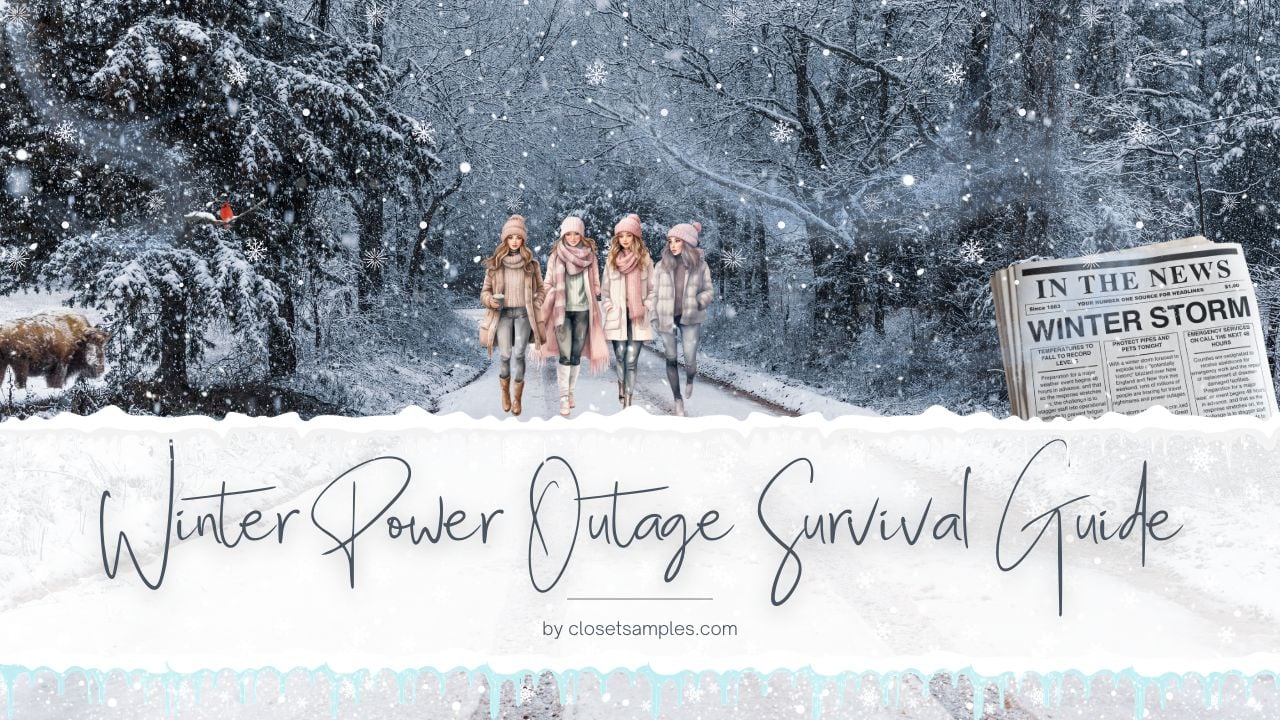
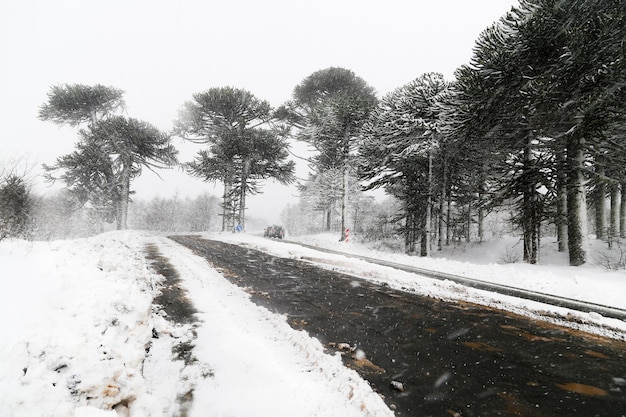
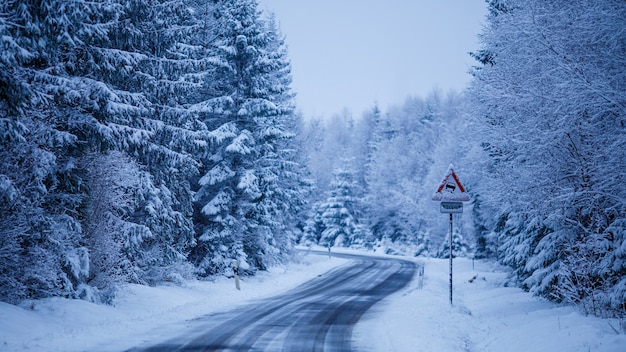
 Image credit: Freepik
Image credit: Freepik

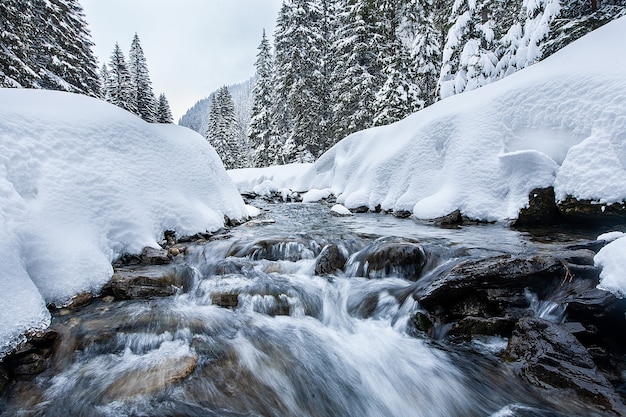









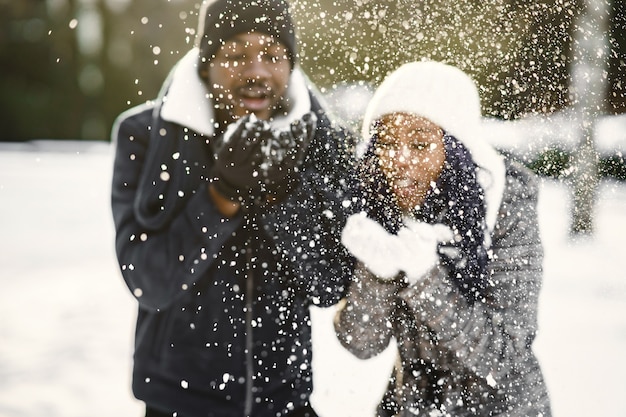

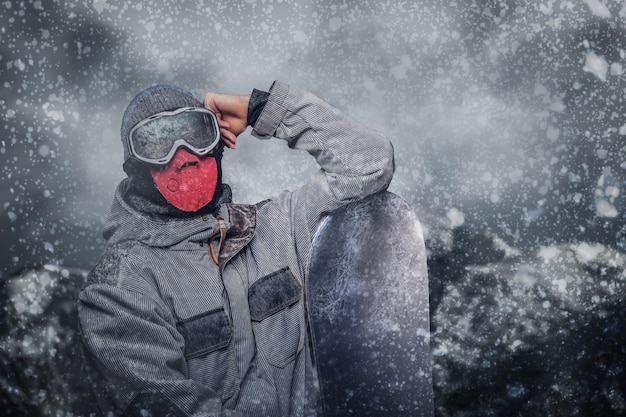




 Here you will find all the best coupon advice, tips and how to make the most of all your coupons!
Here you will find all the best coupon advice, tips and how to make the most of all your coupons! Are you looking for ways to stretch your dollar?
Are you looking for ways to stretch your dollar? 


